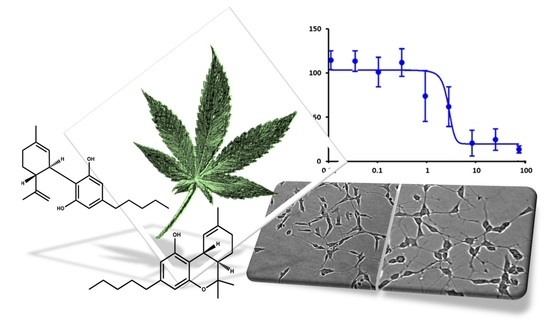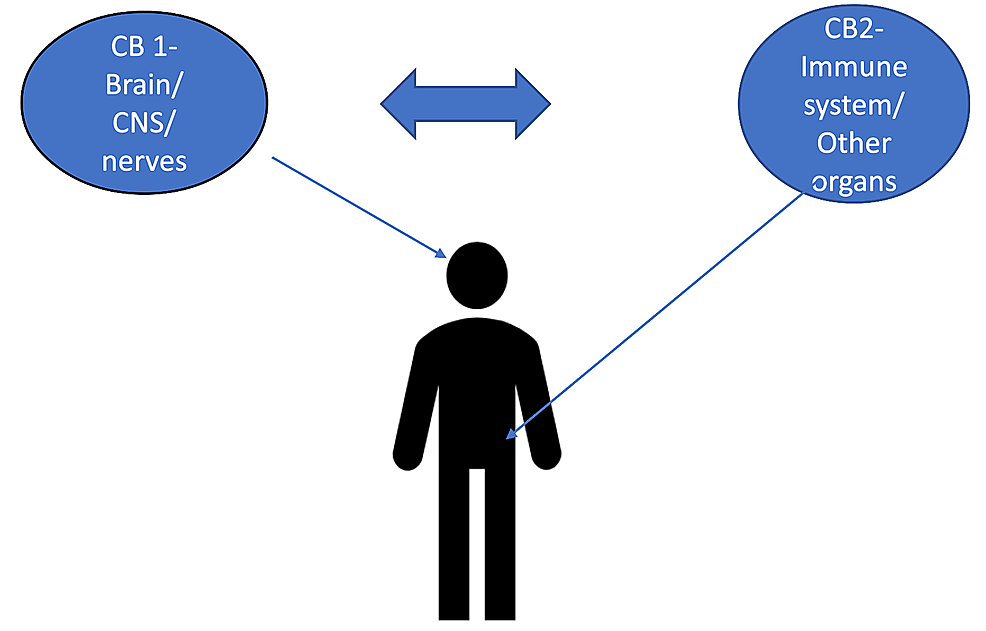 “UV phototherapy used in chronic skin diseases causes redox imbalance and pro-inflammatory reactions, especially in the case of unchanged skin cells.
“UV phototherapy used in chronic skin diseases causes redox imbalance and pro-inflammatory reactions, especially in the case of unchanged skin cells.
To prevent the harmful effects of UV radiation, cannabidiol (CBD) has been used, which has antioxidant and anti-inflammatory properties. Therefore, the aim of this study was to evaluate the effect of CBD on the metabolism of skin keratinocytes in nude rats exposed to UVA/UVB radiation using a proteomic approach.
The results obtained with SDS-PAGE/nanoHPLC/QexactiveOrbiTrap show that exposure of rat’s skin to UVA/UVB radiation, as well as the action of CBD, significantly modified the expression of proteins involved in inflammation, redox balance and apoptosis.
UVA/UVB radiation significantly increased the expression and biological effectiveness of the nuclear factor associated with erythroid factor 2 (Nrf2) and cytoprotective proteins being products of its transcriptional activity, including superoxide dismutase (Cu,Zn-SOD) and the inflammatory response (nuclear receptor coactivator-3 and paralemmin-3), while CBD treatment counteracted and partially eliminated these changes.
Moreover, cannabidiol reversed changes in the UV-induced apoptotic pathways by modifying anti-apoptotic and pro-apoptotic factors (apoptosis regulator Bcl-2 and transforming growth factor-β).
The results show that CBD maintains keratinocyte proteostasis and therefore could be suggested as a protective measure in the prevention of UV-induced metabolic changes in epidermal keratinocytes.”
https://pubmed.ncbi.nlm.nih.gov/33086172/
“In summary, UVA and UVB radiation affect the proteomic profile of keratinocytes of healthy rat skin in different ways. Both types of radiation change the level of proteins involved in the regulation of cellular redox balance, inflammation, and apoptosis. In contrast, topical application of CBD to rat skin, when exposed to UV radiation, helps normalize the expression of keratinocyte proteins that are metabolically relevant by modeling their biosynthesis and degradation. Thus, CBD can maintain the proteostasis of keratinocytes. Because UV therapy is a part of the treatment of skin diseases, e.g. psoriasis, the use of CBD on unchanged skin may be suggested as a protective factor to reduce the metabolic changes caused by UV radiation in unchanged keratinocytes. This suggestion is particularly important when the beneficial effect of cannabidiol on psoriasis-induced skin lesions has recently also been confirmed.”
https://www.sciencedirect.com/science/article/pii/S0731708520315429?via%3Dihub
 “The cannabinoid receptor subtype 2 (CB2R) represents an interesting and new therapeutic target for its involvement in the first steps of neurodegeneration as well as in cancer onset and progression.
“The cannabinoid receptor subtype 2 (CB2R) represents an interesting and new therapeutic target for its involvement in the first steps of neurodegeneration as well as in cancer onset and progression.

 “Uterus transplantation is a complex surgical procedure. Uterine ischemia/reperfusion (IR) damage occurring in this process may cause loss of function in the uterus. Cell damage must be prevented for a healthy uterine function and successful transplantation.
“Uterus transplantation is a complex surgical procedure. Uterine ischemia/reperfusion (IR) damage occurring in this process may cause loss of function in the uterus. Cell damage must be prevented for a healthy uterine function and successful transplantation. “The purpose of this study was to examine the relationship between work-related injury and cannabis use in the past year.
“The purpose of this study was to examine the relationship between work-related injury and cannabis use in the past year. “These data support the notion that CBD and CBDV act as functional partial agonists on dopamine D2-like receptors in vivo.
“These data support the notion that CBD and CBDV act as functional partial agonists on dopamine D2-like receptors in vivo. “In this proof-of-concept study, the antioxidant activity of phytocannabinoids, namely cannabidiol (CBD) and Δ9- tetrahydrocannabinol (THC), were investigated using an in vitro system of differentiated human neuronal SY-SH5Y cells.
“In this proof-of-concept study, the antioxidant activity of phytocannabinoids, namely cannabidiol (CBD) and Δ9- tetrahydrocannabinol (THC), were investigated using an in vitro system of differentiated human neuronal SY-SH5Y cells.
 “This article provides a concise overview of how cannabinoids and the endocannabinoid system (ECS) have significant implications for the prevention and treatment of metabolic syndrome (MetS) and for the treatment of cardiovascular disorders, including cardiac fibrosis.
“This article provides a concise overview of how cannabinoids and the endocannabinoid system (ECS) have significant implications for the prevention and treatment of metabolic syndrome (MetS) and for the treatment of cardiovascular disorders, including cardiac fibrosis. “UV phototherapy used in chronic skin diseases causes redox imbalance and pro-inflammatory reactions, especially in the case of unchanged skin cells.
“UV phototherapy used in chronic skin diseases causes redox imbalance and pro-inflammatory reactions, especially in the case of unchanged skin cells. “We aimed to comprehensively evaluate the effects of medical marijuana on symptoms that are relevant to movement disorders with a focus on Huntington disease (HD).
“We aimed to comprehensively evaluate the effects of medical marijuana on symptoms that are relevant to movement disorders with a focus on Huntington disease (HD). “Although studied in a few randomized controlled trials (RCTs), the efficacy of medical cannabis (MC) for chronic pain remains controversial. Using an alternative approach, this multicenter, questionnaire-based prospective cohort was aimed to assess the long-term effects of MC on chronic pain of various etiologies and to identify predictors for MC treatment success.
“Although studied in a few randomized controlled trials (RCTs), the efficacy of medical cannabis (MC) for chronic pain remains controversial. Using an alternative approach, this multicenter, questionnaire-based prospective cohort was aimed to assess the long-term effects of MC on chronic pain of various etiologies and to identify predictors for MC treatment success. “The burden of chronic pain has affected many individuals leading to distress and discomfort, alongside numerous side effects with conventional therapeutic approaches.
“The burden of chronic pain has affected many individuals leading to distress and discomfort, alongside numerous side effects with conventional therapeutic approaches.